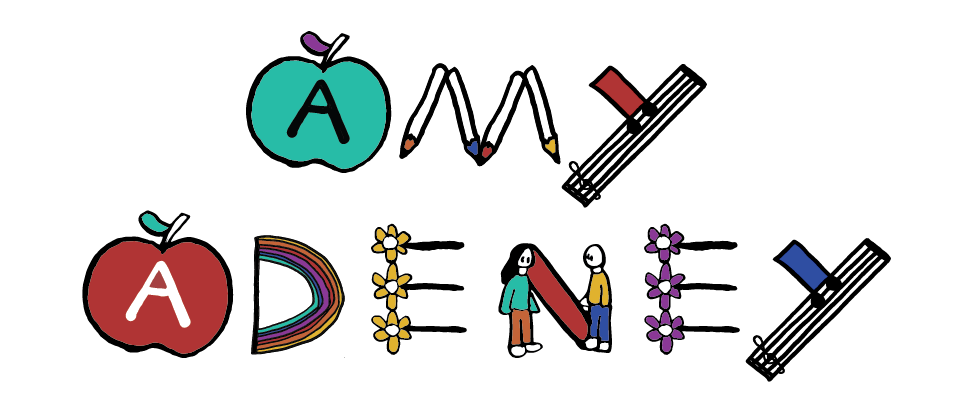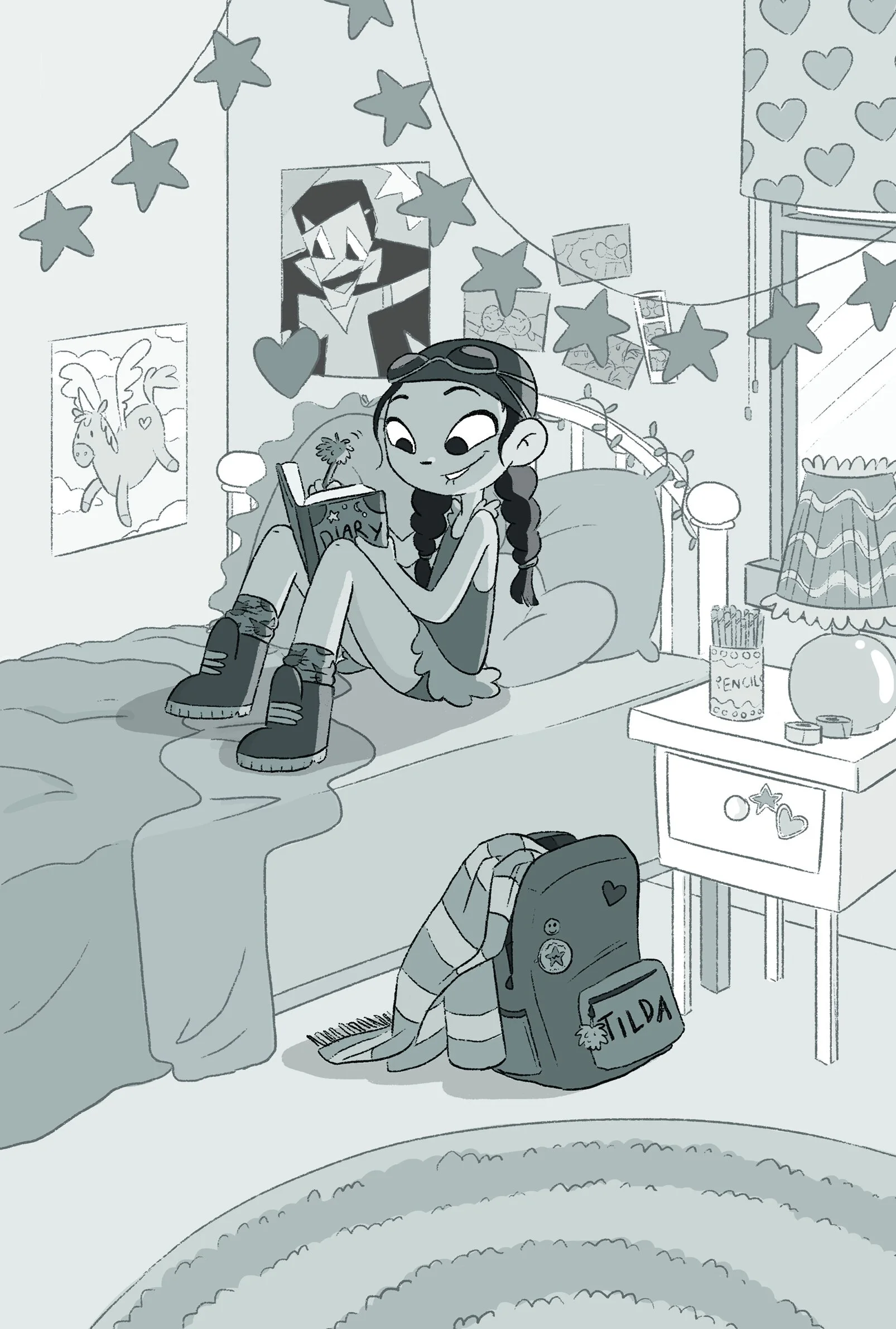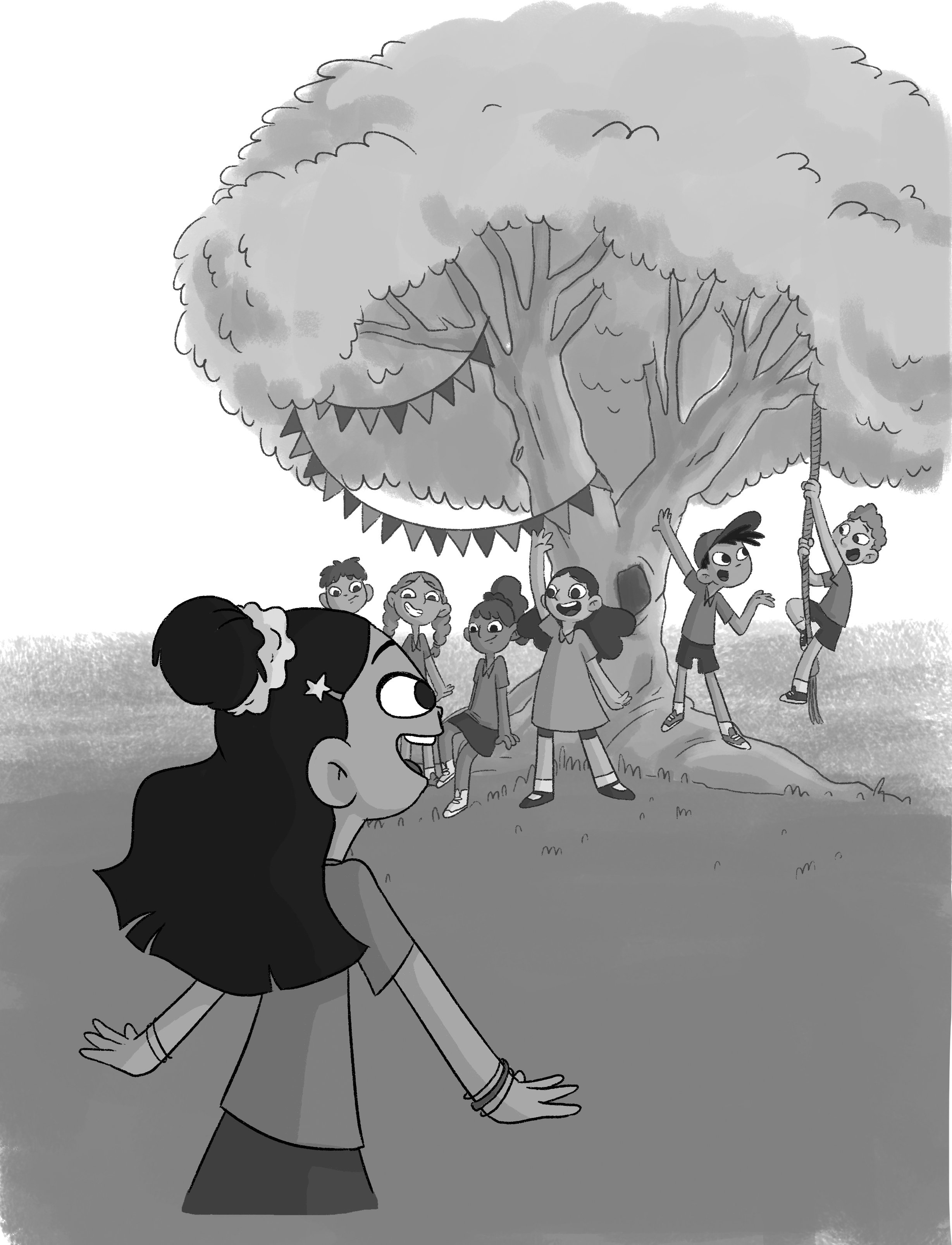Tilda Teaches Cartwheels Teaching Notes
Learning outcomes
Students will:
Learn about T-Charts and their usefulness in comparing concepts.
Collect classroom data and practise cartwheeling.
Plan mini-lessons to try modelling a new skill to a small group.
Learn about compound words and practise using them in a short story.
Synopsis
Tilda is super excited about going to swimming lessons with her class. She thinks she’s a fantastic swimmer, but is disappointed to discover that she’s actually not as good as she thought. She decides to teach lunchtime cartwheel classes, which she thinks will be much more fun than swimming. Teaching Binky and Harry how to do cartwheels is a great success, but Tilda keeps being reminded of how much she’s dreading swimming classes, and their second swimming session is another disaster. By the end of the week cartwheel class is also disastrous, as some older kids take over the class and start doing tricks that even Tilda doesn’t know how to do. Finally Tilda snaps at Binky during one of their cartwheel classes, and is forced to examine the way she’s been behaving. Tilda admits that she needs to be more open to being a student sometimes, instead of always being the teacher. She understands that it’s OK to not be great at something, and to put in the time to get better. Tilda reflects on her week, and then plans some weekend swimming practice sessions to start improving at swimming as soon as possible.
Themes
Friendship
Persistence
Anger & Jealousy
Self-Control
Before you read the story
Read the blurb:
Tilda can’t wait to show Binky and Harry what a superstar swimmer she is, with her splashy splashes and fishy flips! But when she realises she can’t swim properly, Tilda is embuzzled. That’s right, embarrassed and puzzled! Maybe Tilda will feel better if she teaches her friends something actually cool – like cartwheeling! Tilda’s cartwheel class is super fun, until it rolls out of control…
How do you think Tilda’s cartwheel class might roll out of control?
Survey the class: who can do a cartwheel? Look at different ways you can display the data, e.g. pie chart, bar graph, tally.
Discussion Questions
Chapter 1
How does Tilda feel about swimming at the beginning of the chapter? And how has this changed by the end of the chapter?
What about Binky? How might her feelings about swimming change between the beginning and the end of the chapter?
On page 6 there are some examples of compound words: underwater, handstands, waterslides. Can you think of any other compound words?
Chapter 2
Tilda feels embuzzled that Harry and Binky can swim better than her. Can you think of a time when you felt embarrassed and puzzled?
Tilda decides that swimming is boring and pointless. Does she really mean it? Why might she think that?
Tilda uses a T-chart to compare swimming and cartwheels – what else could you compare using a T-chart?
Chapter 3
Why does Tilda use her calm teacher voice to help Binky? What else helps you when you’re feeling nervous?
What is ‘modelling’? Why is it a good teaching strategy for Tilda's Cartwheel Class?
Binky’s first cartwheel is more like a bunny hop. So why does Tilda tell her it’s great?
Chapter 4
Tilda says she did about a gazillion cartwheels before she became an expert. Is there something you have practised over and over to get better at?
Is Tilda’s tummy actually turning cartwheels at the end of the class? What does she mean?
Can you think of a skill that you’re a beginner at? Something that you’re an expert at? And a skill where you’re somewhere between beginner and expert?
Chapter 5
Why does Tilda tell Nico that she’s not feeling well? Is it the truth?
What does it mean to have a big lump in your throat?
What are your favourite games to play in the pool?
Chapter 6
How does Tilda feel about all the new kids under the tree at lunchtime?
Should all the new kids be listening to Teacher Tilda when she tries to start the Cartwheel Class? Why or why not?
Why does Tilda shout at Binky? Is it just because her cartwheel wasn’t good?
Chapter 7
Why is it hard for Teacher Tilda to be a student?
Why does Tilda’s face turn red? How is she feeling?
Why are some kids laughing when they fall on their heads? Do you think you would laugh if that happened to you? How would you feel? What would you do?
Chapter 8
What does Tilda need in order to become better at one-handed cartwheels?
In her weekly report, Tilda gave herself a C+ in teaching, because she was snappy with Binky. What are some of the things she did right while she was teaching the Cartwheel Class?
What do you think Tilda learned this week?
Activities
Terrific T-Charts!
When Tilda is comparing swimming with cartwheels, she finds it useful to use a T-chart to organise her thoughts. T-charts are a fantastic tool with many different uses across the curriculum. They can be used to compare and contrast two concepts, or to list pros and cons. After reading the book, find a way to use a T-chart in a different subject area. There are some great ideas to get you started on Storyboard That.
Cartwheel time!
Whether you’re a cartwheel beginner or an expert, it’s time to practise your cartwheels. Using this video from Amy Adeney’s author website, learn the skills needed to cartwheel like a real gymnast. Practise in small groups, helping each other with feedback and encouragement. Once you’ve had plenty of time to practise (a gazillion times, like Tilda does!), it’s time to survey your class again. Who can do a cartwheel now? Compare this to the data you collected before you read the book. Has your data changed?
Master Modelling!
In Tilda Teaches Cartwheels, Tilda uses a teaching technique called ‘modelling’, which means demonstrating a new skill or activity to the class. In small groups, students can plan their own mini-lessons. Choose a skill that you think you’re really great at – it could be playing a musical instrument, drawing a particular animal, speaking a different language, or anything else you can think of. First try to describe the skill to your group using only words, no actions. Is it hard to explain how to do it? Now each person has a set period of time to model their skill to the rest of the group. How much does your group learn? Was this a useful teaching strategy?
Creative Compound Words!
In Chapter 1 we noticed that there are quite a lot of compound words – underwater, handstands, waterslides… Can you find any others in the story? (Hint: there’s one on the front cover!). Now write your own short story (it could be a funny or silly one) including as many compound words as you can think of. Remember that all stories have a beginning, a middle and an end, and the best stories have some kind of problem or complication that needs to be solved.



